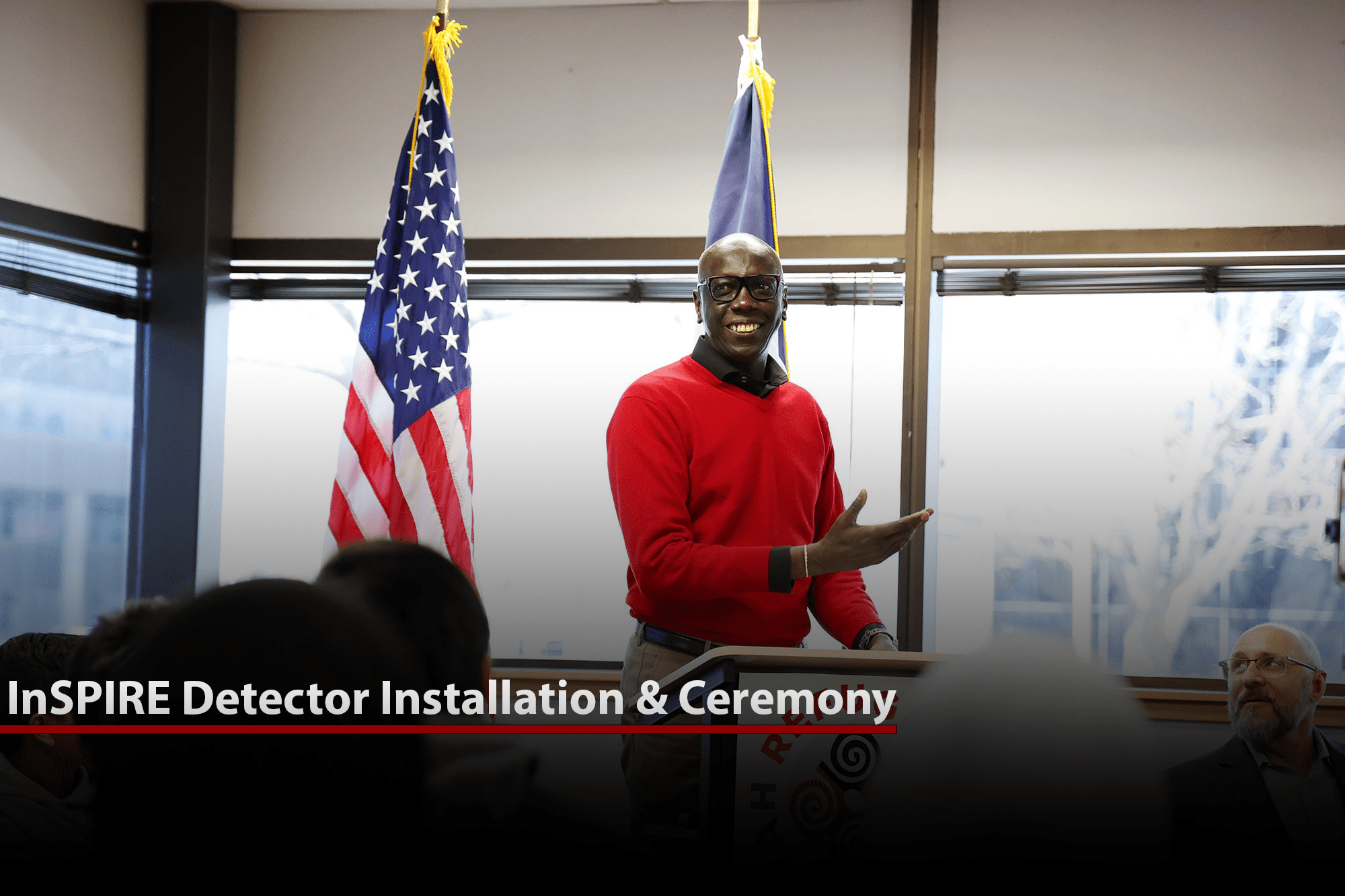
This Article originally appeared in @THEU
On April 9, 2024, a community of refugee students and their families, scientists, educators and policymakers celebrated an event three years in the making—the installation of five cosmic ray detectors atop the Department of Workforce Services Utah Refugee Center in downtown Salt Lake City. The detectors, which measure echoes of cosmic particles bombarding Earth’s atmosphere, were built by nearly 60 participants in a program called “Investigating the Development of STEM-Positive Identities of Refugee Teens in a Physics Out of School Time Experience” (InSPIRE), which brings science research—in this case particle physics—to teenagers and contributes to a worldwide effort to measure cosmic ray activity on Earth.
“Refugee youth often encounter many challenges related to STEM, including restricted exposure to STEM education, language barriers, cultural adjustments and a history of interrupted schooling, resulting in a low rate of high school completion and college matriculation among refugee students,” said Tino Nyawelo, principal investigator of InSPIRE, professor of physics and astronomy at the U and a leader in Utah’s refugee community. Nyawelo’s wife’s family and many of his friends and classmates were relocated to Salt Lake City after fleeing violence at the outbreak of the Sudanese civil war. “The project conducts research to better understand these challenges and how to best broaden access to and engagement in STEM for refugee youth and other historically disenfranchised populations.”
InSPIRE brings together the University of Utah, Utah State University, Utah Department of Workforce Services Refugee Services Office, as well as the Dutch National Institute for Subatomic Physics (Nikhef), to involve teens in real science. Data from the students’ cosmic ray detectors help us understand the origins of the universe.
Funded by a $1.1 million Advancing Informal STEM Learning grant from the U.S. National Science Foundation, InSPIRE explores how refugee teenagers identify with STEM subjects while participating in research. Fifty-seven refugee teens spent one to two days a week for nearly three years building the detectors while learning particle physics and computer programming. The students designed their own research projects, posing questions such as whether the moon effects the rate of cosmic rays hitting Earth. While some participants worked on the detectors, others focused on crafting films of their fellow students’ research journeys. These students are working on a documentary, in partnership with the ArtsBridge America program at the U’s College of Fine Arts.
“We want students with refugee backgrounds to know that they are valued in physics and in STEM disciplines more broadly,” said Sarah Braden, InSPIRE co-principal investigator and associate professor of cultural studies at USU’s College of Education and Human Services. “These students learned physics, computing and filming techniques, and they brought their ingenuity, curiosity, resilience and playfulness. Knowingly or not, the students are helping to transform the discipline in which they participate, opening new pathways for themselves and for other students to see themselves as valued contributors to STEM disciplines.”
The group’s peer-reviewed publications describe the ways in which the program supported students in engaging with their multilingualism, and the importance of encouraging spontaneous play in informal STEM environments. As one participant shared, “I didn’t know I was interested in STEM. But when we did the building and the soldering and the calibrating, I learned I have a passion for science. And I’m more confident now in science-related topics, especially when the activities are more than sitting and learning.”
Read more about this Article in @THEU By LISA POTTER
In addition to this Article @THEU, coverage for this event can also be found here:
